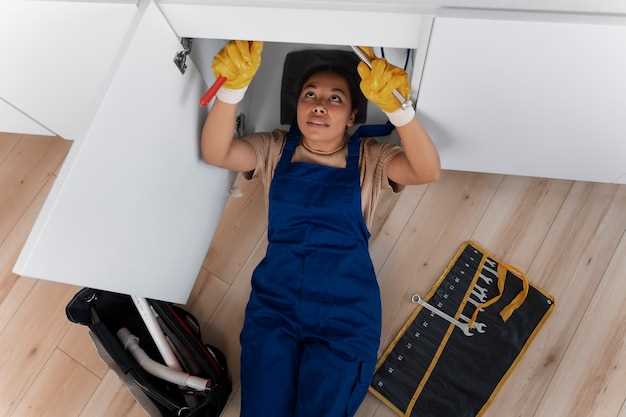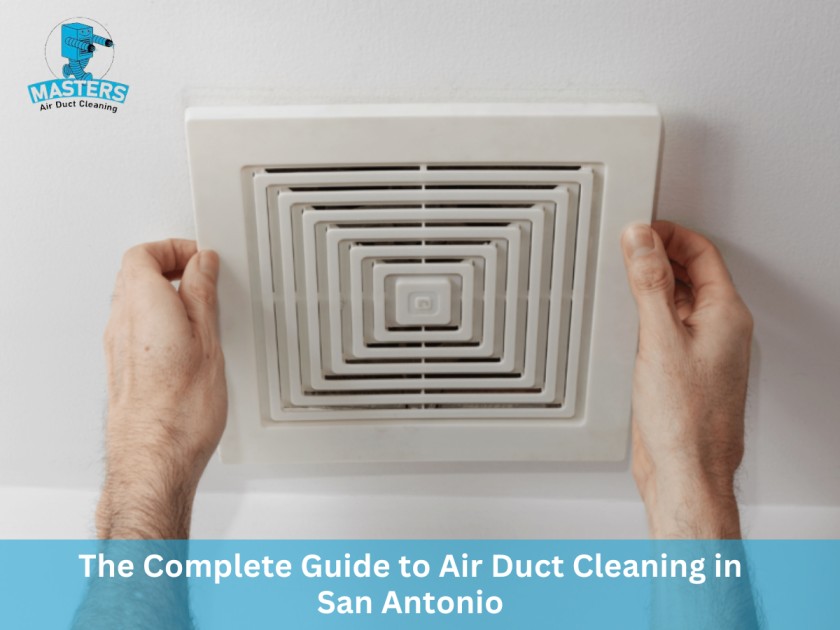
As a responsible homeowner, you understand the importance of maintaining a comfortable and healthy living environment for you and your family. One crucial aspect of this is ensuring the cleanliness and efficiency of your heating and cooling system. While it may be tempting to leave the maintenance to the professionals, taking a proactive approach to DIY air duct cleaning can save you both time and money in the long run.
Keeping your indoor air ducts clean plays a vital role in improving the overall quality of the air you breathe. Over time, dust, debris, and other pollutants accumulate within the ductwork, reducing the system’s efficiency and potentially leading to respiratory issues for you and your loved ones. By taking the reins and performing routine cleaning, you can significantly reduce the risk of allergies, asthma, and other respiratory problems.
Although hiring professional services for air duct cleaning in San Antonio is undoubtedly an option, with a little time and effort, you can achieve remarkable results right in the comfort of your own home. Equipped with essential tips and tricks, you can successfully embark on this DIY project, ensuring a cleaner and healthier living environment for your family. Now, let’s explore some effective techniques for maintaining your air ducts and optimizing your heating and cooling system’s performance.
Is DIY Air Duct Cleaning Worth It? A Look at the Pros and Cons
When it comes to maintaining the ventilation system in your home, considering whether DIY air duct cleaning is worth it can be a critical decision. Understanding the potential benefits and drawbacks can help you make an informed choice about how to proceed.
Let’s begin by examining the advantages of taking on the task yourself. One of the primary benefits is the potential cost savings. By opting for a DIY approach, you can avoid hiring professional services, which can sometimes be expensive. Additionally, tackling the cleaning process on your own allows you to have direct control over the entire operation, ensuring that the job is done to your satisfaction.
However, it’s essential to also consider the potential drawbacks of DIY air duct cleaning. One significant disadvantage is the lack of expertise and specialized equipment. Professionals in the field have years of experience and access to specialized tools that enable them to thoroughly clean and maintain air ducts. DIY efforts may not match the expertise and effectiveness of professional cleaning, leading to subpar results.
Furthermore, without proper knowledge and understanding of air duct systems, there is a risk of causing damage. Mishandling the cleaning process or using incorrect cleaning products can potentially harm the ducts, leading to leaks, cracks, or even contamination. These damages can be costly to repair and may compromise the overall efficiency of your ventilation system.
In conclusion, while DIY air duct cleaning may offer cost savings and control over the process, it’s important to weigh the potential drawbacks. Considering the lack of expertise and specialized tools, as well as the risk of causing damage, homeowners should carefully assess their capabilities and weigh them against the potential benefits before deciding whether to proceed with DIY air duct cleaning or hire professional services.
The Benefits of DIY Air Vent Maintenance

Regular maintenance and cleaning of your home’s air vents can offer a range of advantages, both for the health and comfort of your family and for the overall efficiency of your HVAC system.
Improved Indoor Air Quality: By cleaning your air vents regularly, you can remove accumulated dust, dirt, pet dander, and other allergens that can circulate throughout your home. This helps to improve the quality of the air you breathe, reducing the risk of respiratory issues and allergies.
Enhanced Energy Efficiency: When your air vents are clogged with debris, it can restrict the airflow and make your HVAC system work harder to maintain a comfortable temperature. By cleaning the vents yourself, you can help remove any obstructions, allowing for better airflow and improved energy efficiency.
Extended Lifespan of HVAC System: Regular cleaning and maintenance of your air vents can help prevent unnecessary strain on your HVAC system. By removing dirt and debris, you can reduce the wear and tear on the system, helping it to operate smoothly and potentially extending its lifespan.
Cost Savings: DIY air vent cleaning can save you money on professional cleaning services. By investing a little time and effort into maintaining your vents yourself, you can avoid the cost of hiring a professional while still reaping the benefits of a clean and efficient HVAC system.
Peace of Mind: Knowing that you are taking proactive steps to maintain a clean and healthy living environment can provide peace of mind for you and your family. Regular air vent cleaning can contribute to a safer and more comfortable home, free from potentially harmful contaminants.
In conclusion, DIY air vent cleaning offers numerous benefits, including improved indoor air quality, enhanced energy efficiency, an extended HVAC system lifespan, cost savings, and peace of mind. By making a regular cleaning routine a priority, you can enjoy a healthier and more comfortable living space.
The Potential Pitfalls of DIY Air Duct Maintenance
Ensuring the cleanliness and proper functioning of your home’s ventilation system is of utmost importance. However, attempting to handle air duct maintenance on your own can lead to various potential pitfalls. It is essential to be aware of these challenges to make an informed decision regarding whether to seek professional assistance or proceed with a DIY approach.
| Inadequate Equipment | Without access to industry-grade tools and equipment, DIY air duct maintenance may not effectively remove accumulated dust, debris, and allergens. This can result in incomplete cleaning and compromised indoor air quality. |
| Limited Expertise | Professionals in the field possess the necessary knowledge and expertise to thoroughly inspect and clean air duct systems. DIY attempts may lack the understanding of intricate ductwork, potentially leading to ineffective cleaning or even damage to the system. |
| Health Risks | Improper handling of contaminants within the air ducts can pose significant health risks, especially for individuals with respiratory conditions or allergies. Professional cleaners are trained to handle hazardous substances safely, while DIY efforts may inadvertently release pollutants into the air. |
| Time and Effort | Thoroughly cleaning and maintaining air ducts requires time and effort. DIY attempts may prove to be time-consuming and labor-intensive, particularly when lacking professional knowledge and tools. Moreover, valuable time spent on DIY projects can be better utilized elsewhere. |
| Overall Impact and Efficiency | Professional air duct cleaning not only eliminates accumulated debris but also optimizes the efficiency of the HVAC system. DIY attempts might not achieve the desired results, impacting energy consumption, system performance, and ultimately increasing utility bills. |
While the idea of saving money and taking control of your home maintenance is appealing, it is crucial to consider the potential pitfalls of DIY air duct cleaning. Seeking professional assistance ensures thorough cleaning, improved indoor air quality, reduced health risks, and optimal efficiency of your home’s ventilation system.
The Essential Tools for DIY Air Duct Maintenance in San Antonio

When it comes to maintaining your home’s air duct system in San Antonio, having the right tools is essential. Properly cleaning and maintaining your air ducts can improve indoor air quality and ensure the efficiency of your HVAC system. In this section, we will discuss the essential tools you will need to successfully perform DIY air duct maintenance.
1. Vacuum Cleaner: A high-powered vacuum cleaner with a long hose attachment is crucial for removing dust, debris, and other contaminants from your air ducts. Look for a vacuum cleaner with HEPA filtration to ensure that it captures even the smallest particles.
2. Brushes and Whips: To dislodge stubborn dirt and debris from the sides of your air ducts, you will need a selection of brushes and whips. These tools are designed to reach into crevices and corners, effectively removing built-up dust and grime.
3. Screwdriver and Pliers: In some cases, you may need to remove air duct grilles or access panels to gain better access to your ductwork. A screwdriver and a pair of pliers will come in handy for these tasks.
4. Sanitizing Solution: To eliminate any harmful bacteria or mold that may be present in your air ducts, it is essential to use a suitable sanitizing solution. Look for a product specifically designed for air ducts and follow the instructions carefully.
5. Protective Gear: Working with air ducts can be a dirty job, so be sure to wear appropriate protective gear. This includes gloves, safety glasses, and a dust mask to protect yourself from potential allergens and irritants.
6. Inspection Camera: An inspection camera can be a valuable tool for diagnosing any potential issues within your air duct system. These cameras allow you to see inside the ducts, identifying any blockages, leaks, or damage that may require further attention.
7. Sealant: To ensure a tight seal and prevent any air leaks, it may be necessary to apply a sealant to the joints and connections in your air ducts. Look for a sealant that is specifically designed for HVAC systems and follow the manufacturer’s instructions.
By having these essential tools on hand, you will be well-prepared to tackle any DIY air duct maintenance tasks in your San Antonio home. Remember to follow proper safety procedures and consult a professional if you encounter any complex issues.
A Guide to Choosing the Right Tools for the Job
When it comes to undertaking a project like cleaning your home’s air ducts, selecting the appropriate tools is crucial for achieving successful results. In this section, we will explore the key factors to consider when choosing the right tools for the job, giving you the knowledge you need to make informed decisions.
1. Determine the size and type of ducts: Before you begin, it is essential to identify the size and material of your air ducts. This information will help you select tools that are specifically designed to fit and work effectively with your duct system, ensuring thorough and efficient cleaning.
- 2. Assess the accessibility of your ducts: Take a close look at the accessibility of your air ducts. Are they easily reachable or located in tight spaces? Depending on this factor, you may need tools that can navigate cramped areas or have extended reach capabilities.
- 3. Consider the level of contamination: The level of dirt and debris present in your air ducts will determine the intensity of cleaning required. Some tools are designed for heavy-duty cleaning, while others are more suitable for regular maintenance. Assess the condition of your ducts to determine the most appropriate tools for the job.
- 4. Evaluate your budget: As with any project, it is important to consider your budget when selecting tools. Different brands and models offer varying features and price ranges. Prioritize tools that meet your requirements while fitting within your budget.
- 5. Read reviews and seek professional advice: Before making a final decision, take the time to read reviews from other homeowners who have experience in air duct cleaning. Their feedback can provide valuable insights into the effectiveness and reliability of different tools. Additionally, consulting with professionals in the field can help you make informed choices based on their expertise.
By taking these factors into account, you can confidently choose the right tools for the job and ensure a successful air duct cleaning project. Remember that proper tool selection is vital for maintaining clean and healthy indoor air quality in your San Antonio home.

Leave a Reply